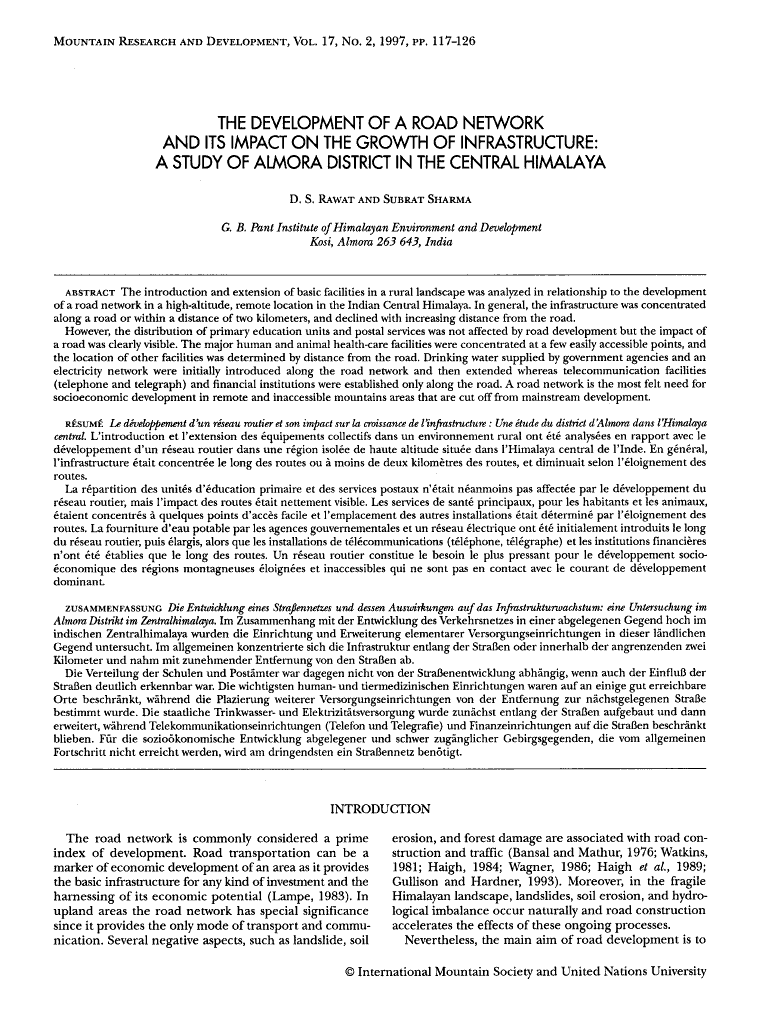
The introduction and extension of basic facilities in a rural landscape was analyzed in relationship to the development of a road network in a high-altitude, remote location in the Indian Central Himalaya. In general, the infrastructure was concentrated along a road or within a distance of two kilometers, and declined with increasing distance from the road. However, the distribution of primary education units and postal services was not affected by road development but the impact of a road was clearly visible. The major human and animal health-care facilities were concentrated at a few easily accessible points, and the location of other facilities was determined by distance from the road. Drinking water supplied by government agencies and an electricity network were initially introduced along the road network and then extended whereas telecommunication facilities (telephone and telegraph) and financial institutions were established only along the road. A road network is the most felt need for socioeconomic development in remote and inaccessible mountains areas that are cut off from mainstream development. /// L'introduction et l'extension des équipements collectifs dans un environnement rural ont été analysées en rapport avec le développement d'un réseau routier dans une région isolée de haute altitude située dans l'Himalaya central de l'Inde. En général, l'infrastructure était concentrée le long des routes ou à moins de deux kilomètres des routes, et diminuait selon l'éloignement des routes. La répartition des unités d'éducation primaire et des services postaux n'était néanmoins pas affectée par le développement du réseau routier, mais l'impact des routes était nettement visible. Les services de santé principaux, pour les habitants et les animaux, étaient concentrés à quelques points d'accès facile et l'emplacement des autres installations était déterminé par l'éloignement des routes. La fourniture d'eau potable par les agences gouvernementales et un réseau électrique ont été initialement introduits le long du réseau routier, puis élargis, alors que les installations de télécommunications (téléphone, télégraphe) et les institutions financières n'ont été établies que le long des routes. Un réseau routier constitue le besoin le plus pressant pour le développement socioéconomique des régions montagneuses éloignées et inaccessibles qui ne sont pas en contact avec le courant de développement dominant.